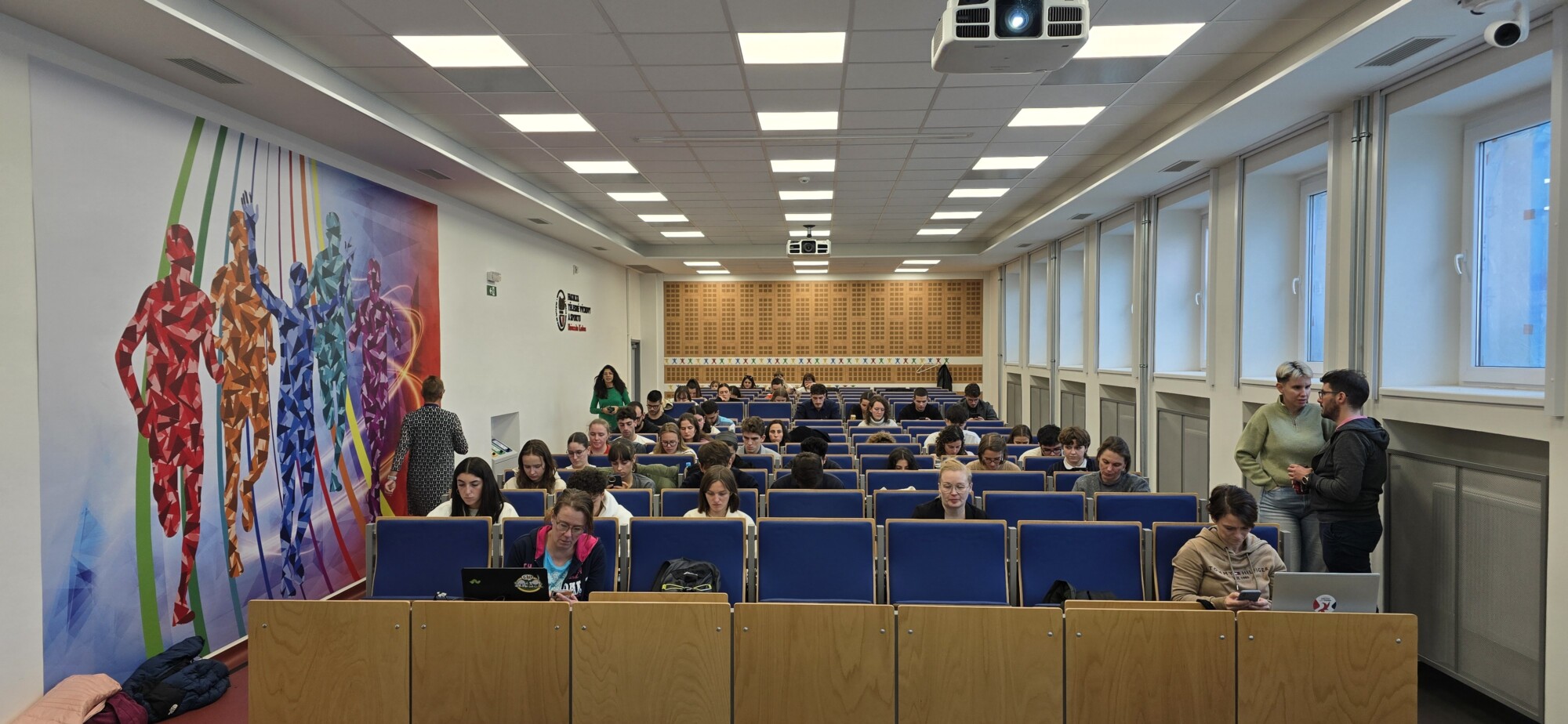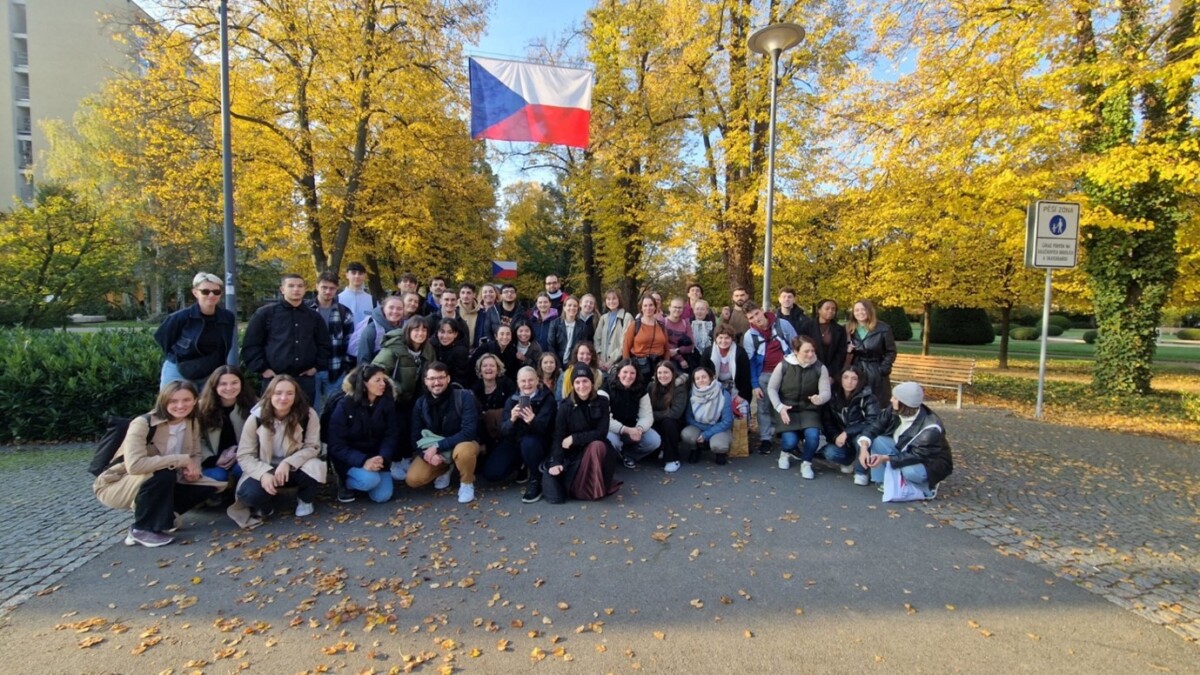
Savonia Article Pro: Physical therapy interventions in pain management after knee arthroplasty
Savonia Article Pro is a collection of multidisciplinary Savonia expertise on various topics.
This work is licensed under CC BY-SA 4.0
Evidence-Based Physical Therapy (EBP) uses the best research evidence with clinical expertise and user’s preferences to produce the most appropriate and effective care. At week 43 in 2024, we had Blended Intensive program (BIP) in Czech Republic, Charles University about EBP. This BIP program opened with welcome words of the president of The European Network of Physiotherapy in Higher Education (ENPHE) and followed with the basis of EBP and teachers who highlighted the main challenges at different Physical Therapy fields.
More than 43 physiotherapy students and 8 teachers from five universities (Savonia University of Applied Sciences, Finland, Universidade da Coruña, Spain, Charles University Prague, Universidad Europea de Madrid, Spain and CEERRF, France), actively participated this week and shared experiential group dynamics and social activities (Picture 1). Students worked together and wrote articles devoted to the following themes: Evidence Based in sport, prevention, injuries, neurological diseases, respiratory diseases, cardiovascular diseases, children and older adults. In this learning task, students practiced conducting a mini review and using PEDro scale to assess the quality of a studies. In the following you can consult the work presented by the students on pain management after knee arthroplasty topic.

Background
Knee arthroplasty is a widely performed procedure aimed at reducing chronic pain, improving ROM and restoring knee function in patients with severe knee joint damage. Managing postoperative pain is still a complex issue, impacting both recovery duration and patient outcomes.
This review evaluates the effectiveness of five physical therapy interventions which can reduce postoperative pain following knee arthroplasty. These were:
– Manual Lymphatic Drainage (MLD),
– Continuous Passive Motion (CPM),
– Maximal Strength Training,
– Pulsed Electromagnetic Fields (PEMFs)
– Compression Therapy.
The purpose of this review was to provide a review of physical therapy strategies for managing pain following knee replacement surgery. We chose to review post-surgery rehabilitation for knee arthroplasty due to its increasing prevalence and significant variability in treatment protocols, which can impact patient outcomes.
Methodology
The PICO question is: Which of the chosen physical therapy interventions are more effective in reducing the level of pain in patients after knee arthroplasty?
Search strategy
Asystematic review was developed using this databases: Pedro, PubMed and EBSCO. The search terms used included: “Pain Management,” “Rehabilitation,” and “Arthroplasty, Replacement, Knee.” Studies were filtered to include only Randomized Control Trials from the selected databases and those that provided robust data on pain outcomes (Picture 2).

Picture 2. Students work group presentation
Eligibility Criteria:
● Study Design: Randomized controlled trials (RCTs).
● Publication Period: Last 15 years.
● Inclusion Criteria: Studies that focused on physical therapy interventions aimed at controlling and reducing pain after knee arthroplasty.
● Exclusion Criteria: Studies with poor methodology or incomplete follow-up data
PEDro Scale
The overall methodological quality of the reviewed studies varied. Two studies with scores 8/10 demonstrated high methodological quality. Other two studies that reached score 6 show results to be “good”. Last study with a lower score indicates a need for caution when interpreting data from the articleinterventions not specifically targeting pain management.
Results
This systematic review of randomized controlled trials on pain management interventions following knee arthroplasty reveals that Pulsed Electromagnetic Fields (PEMFs) are the most effective intervention for reducing pain. What it shows is that PEFMFs therapy may be a valuable accessory to standardized rehabilitation strategies in knee arthroplasty recovery. Other interventions like Manual Lymphatic Drainage, Continuous Passive Motion, Maximal Strength Training, and Compression Therapy provide varied benefits, with some focusing more on improving mobility or reducing swelling rather than direct pain relief.
Conclusion
These results point at the need for individualization of rehabilitation protocols that combine interventions depending on the patient’s specific needs, such as managing inflammation, improving strength, and enhancing mobility. Future research should focus on combining these interventions and other physical therapy in a multi-modal approach, potentially accomplishing greater pain relief and improved functional recovery outcomes in patients undergoing knee arthroplasty.
Authors:
Cesare Vetrano, physiotherapy student, Universsidad Europea de Madrid, Spain.
Roberto Blanco Garrido, physiotherapy student, Universidad Europea de Madrid, Spain.
Júlia Rumanová, physiotherapy student, Charles University, Czech Republic.
Sonja Lydman, physiotherapy student, Savonia, University of Applied Sciences, Kuopio, Finland.
Abril López Chas, physiotherapy student, University of A Coruña, A Coruña, Spain.
Dagmar Pavlu, Physiotherapist, Assoc. Prof. Charles University, Czech Republic
Ivana Vláčilová, Physiotherapist, PhD., Charles University, Czech Republic
Marja Äijö, PT, PhD Principal Lecturer of gerontology and rehabilitation, Savonia, University of Applied Sciences, Kuopio, Finland
Veronica Robles García, PhD. PT. OT. Lecturer, University of A Coruña, A Coruña, Spain
Beatriz Martínez Toledo, PT. Lecturer at University of A Coruña, A Coruña, Spain
Montserrat Fernández Pereira, PT, Lecturer at University of A Coruña, A Coruña, A Coruña, Spain
Lorena Canosa Carro, PT, MSc, PhD. Lecturer at Universidad Europea de Madrid, Spain
Adrien Pallot, PT, MSc, Lecturer at CEERRF, France
References:
1. Gil-González, S., Barja-Rodríguez, R.A., López-Pujol, A. et al. Continuous passive motion not affect the knee motion and the surgical wound aspect after total knee arthroplasty. J Orthop Surg Res 17, 25 (2022). https://doi.org/10.1186/s13018-022-02916-w
2. Christensen, L. M. R., Arnesen, C. E., Möller, S., & Hyldig, N. (2021). The effect of compression therapy on post-surgical swelling and pain after total knee arthroplasty. International journal of orthopaedic and trauma nursing, 41, 100815. https://doi.org/10.1016/j.ijotn.2020.100815
3. Winther, S. B., Foss, O. A., Klaksvik, J., & Husby, V. S. (2020). Pain and load progression following an early maximal strength training program in total hip- and knee arthroplasty patients. Journal of Orthopaedic Surgery, 28(2), 230949902091639. https://doi.org/10.1177/2309499020916392
4. D’Ambrosi, R., Ursino, C., Setti, S., Scelsi, M., & Ursino, N. (2022). Pulsed electromagnetic fields improve pain management and clinical outcomes after medial unicompartmental knee arthroplasty: A prospective randomised controlled trial. Journal of ISAKOS Joint Disorders & Orthopaedic Sports Medicine, 7(5), 105–112. https://doi.org/10.1016/j.jisako.2022.05.002
5. Ebert, J. R., Joss, B., Jardine, B., & Wood, D. J. (2013). Randomized trial investigating the efficacy of manual lymphatic drainage to improve early outcome after total knee arthroplasty. Archives of Physical Medicine and Rehabilitation, 94(11), 2103–2111. https://doi.org/10.1016/j.apmr.2013.06.009